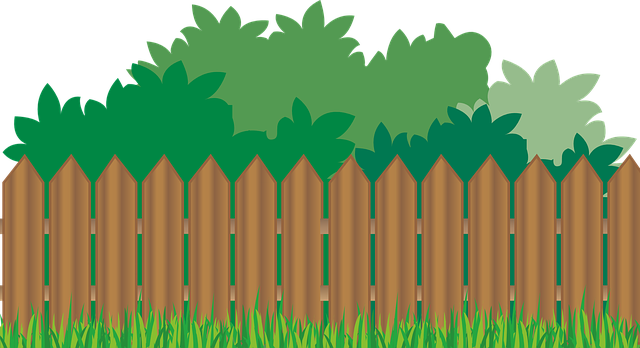Fences serve as both functional and aesthetic elements in our outdoor spaces, and proper care is essential to maintain their beauty. Fence staining and sealing are crucial processes that protect wood from the elements, enhance its appearance, and ensure longevity. This guide delves into the art of fence maintenance, offering insights on choosing the right stain, preparing surfaces, application techniques, understanding sealers’ roles, and routine care tips for vibrant, lasting results.
- Understanding Fence Staining and Sealing Benefits
- Choosing the Right Stain for Your Fence
- Preparation: Cleaning and Sanding for Optimal Results
- Applying Stain: Techniques and Tools
- The Role of Sealer in Protecting Wood Fences
- Maintenance Tips for Longevity
Understanding Fence Staining and Sealing Benefits
Fence staining and sealing are essential maintenance practices for wooden fences, offering a range of benefits that extend far beyond aesthetics. By applying a protective coat of stain or sealer, you create a barrier against the elements, including sun exposure, rain, and humidity, which can cause wood to rot, crack, or fade over time. This simple step not only preserves the fence’s structural integrity but also ensures it retains its beauty for years to come.
Moreover, these protective coatings enhance the durability of your wooden fence. They fill in pores and cracks, preventing moisture from seeping into the wood and reducing the risk of pest infestation. Staining and sealing also provide a variety of color options, allowing you to customize your fence’s appearance to complement your home’s exterior or create a striking contrast. This added visual appeal can increase your property’s value and attract positive attention from passersby.
Choosing the Right Stain for Your Fence
When it comes to fence staining and sealing, selecting the suitable stain is a pivotal first step. The right choice will not only enhance your wooden fence’s aesthetic appeal but also play a crucial role in protecting it from environmental factors. Different stains offer various levels of durability, color options, and transparency, catering to diverse preferences and fence conditions.
Consider factors such as your climate, the type of wood, and your desired look when making this decision. For instance, if you live in an area with high humidity or frequent rainfall, opt for a stain with better water-resistance to prevent premature fading or peeling. Similarly, lighter stains allow more light penetration, showcasing the natural grain of the wood, while darker stains create a more uniform and dramatic appearance.
Preparation: Cleaning and Sanding for Optimal Results
Before applying any stain or sealer, proper preparation is key to achieving excellent results. Start by thoroughly cleaning your wooden fence to remove any dirt, debris, and surface grime. Use a pressure washer or a garden hose with a nozzle attachment for this task. Pay close attention to areas that are particularly dirty or have built-up residue from previous treatments.
Once the fence is clean, lightly sand the entire surface using a medium-grit sandpaper. This process helps to roughen the wood’s surface, allowing the stain and sealer to adhere better. It also fills in any minor cracks and crevices, ensuring an even finish. Always work with the grain of the wood and be gentle to avoid damaging the fence.
Applying Stain: Techniques and Tools
Applying stain to a wooden fence is an art that requires precision and the right tools for optimal results. The process begins by cleaning and preparing the fence, ensuring any loose debris or dirt is removed. This step is crucial as it allows the stain to adhere properly. Once the fence is ready, choose your desired stain color from the vast array of options available in the market.
When applying the stain, use a high-quality brush or roller designed for wood staining. These tools ensure even distribution and prevent splotches or uneven coverage. Start at one corner, applying the stain in long, even strokes, working your way across the fence’s surface. Allow the stain to dry according to the manufacturer’s instructions before adding additional coats for a deeper, more vibrant color.
The Role of Sealer in Protecting Wood Fences
A sealer plays a pivotal role in protecting wood fences from the elements, extending their lifespan and preserving their aesthetic appeal. It creates a protective barrier on the fence’s surface, preventing water, UV rays, and other environmental factors from penetrating the wood. This is crucial as these elements are primary contributors to wood decay and fading.
When applied correctly, a good quality sealer ensures that the wood remains dry, reducing the risk of rot and mold growth. It also fills in cracks and pores, enhancing the fence’s overall durability. Additionally, sealers offer a range of color options, allowing homeowners to customize their fences while providing an extra layer of protection.
Maintenance Tips for Longevity
Regular maintenance is key to extending the life of your stained and sealed fence. Start by cleaning the fence surface annually to remove any built-up dirt, mold, or mildew using a soft brush and mild detergent. Avoid harsh chemicals as they can strip away the sealer. After cleaning, reapply a fresh coat of sealant every 2-3 years, depending on exposure to elements. This protective layer shields the wood from moisture, UV rays, and extreme temperatures, ensuring your fence stays vibrant and durable for years to come.
